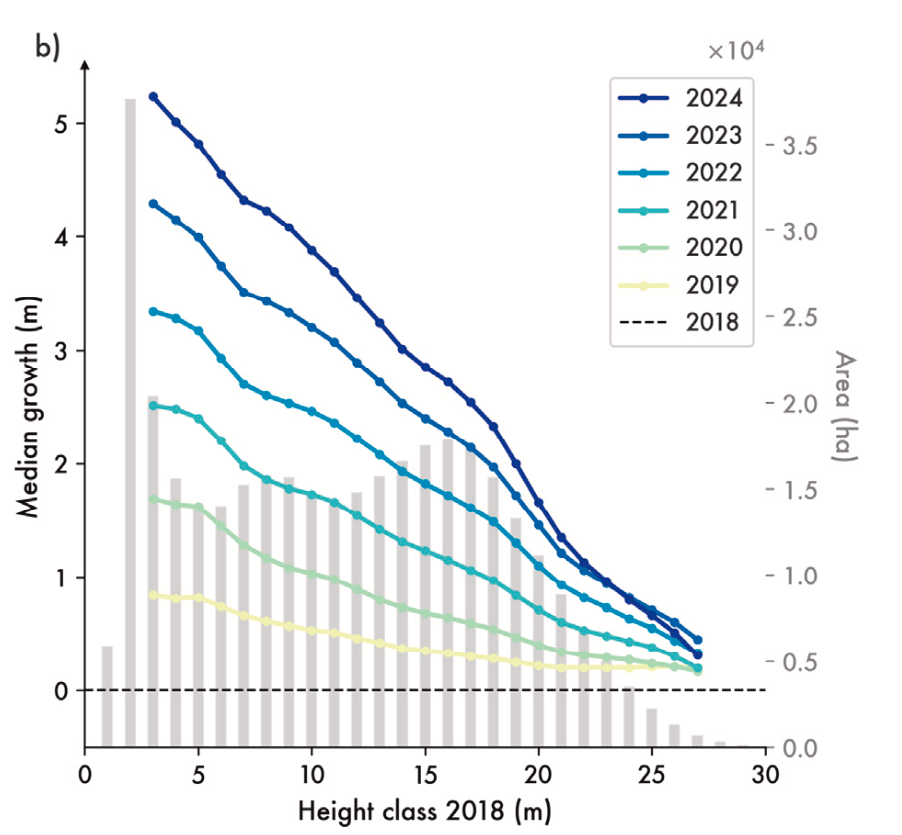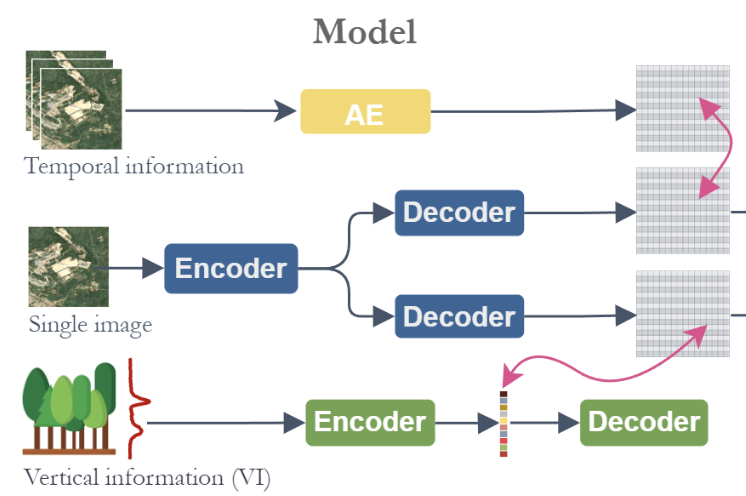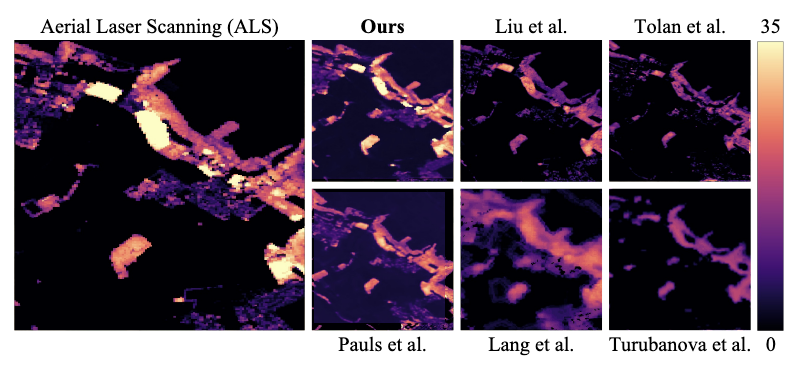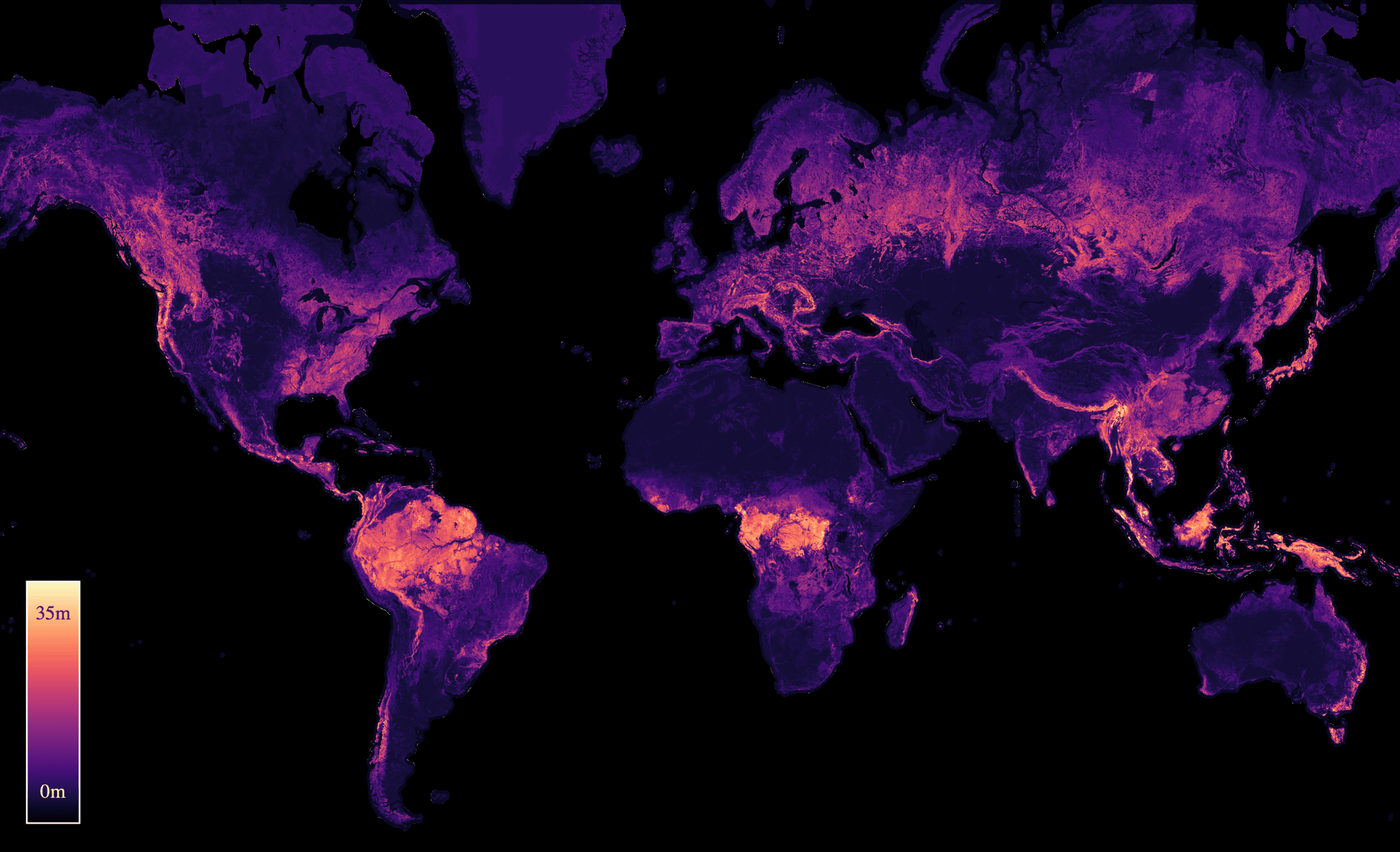AI-Based High-Resolution Forest Monitoring
Preserving global vegetation is crucial for addressing and mitigating climate change. Accurate, up-to-date forest health data is essential. AI4Forest aims to develop advanced AI methods to monitor forests using satellite imagery, including radar and optical data. The project will create scalable techniques for detailed, high-resolution maps of the globe, e.g., to monitor canopy height, biomass, and to track forest disturbances. This project is funded by the Federal Ministry of Research, Technology and Space and the German Aerospace Center (project ID 01IS23025B).
Please see the project website at ai4forest.eu for more details.
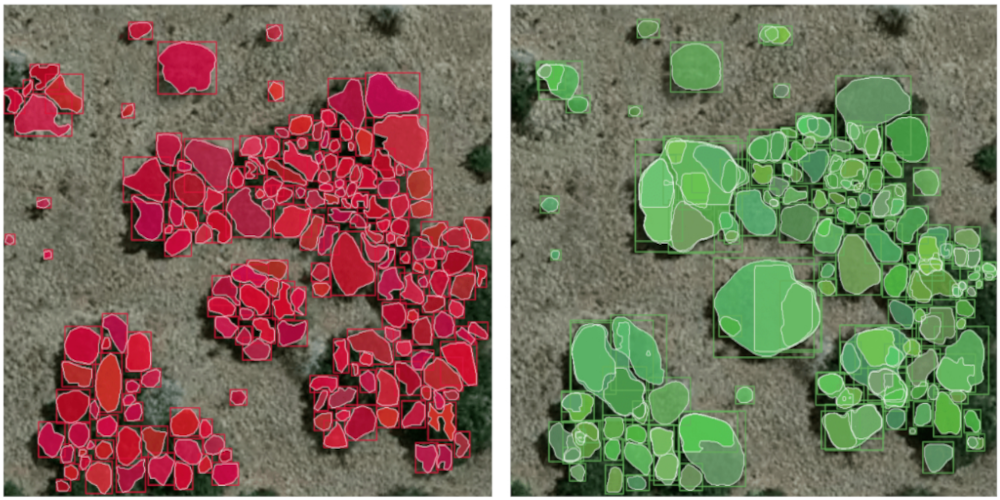
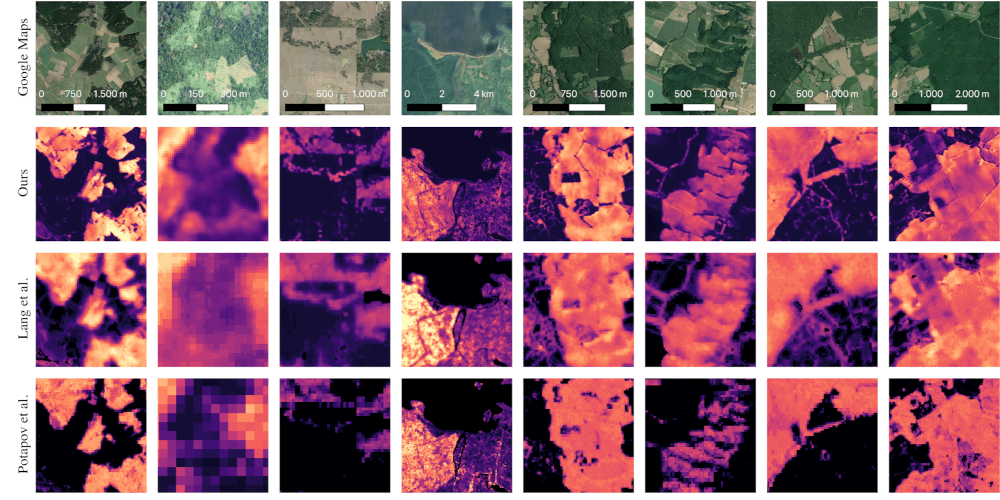
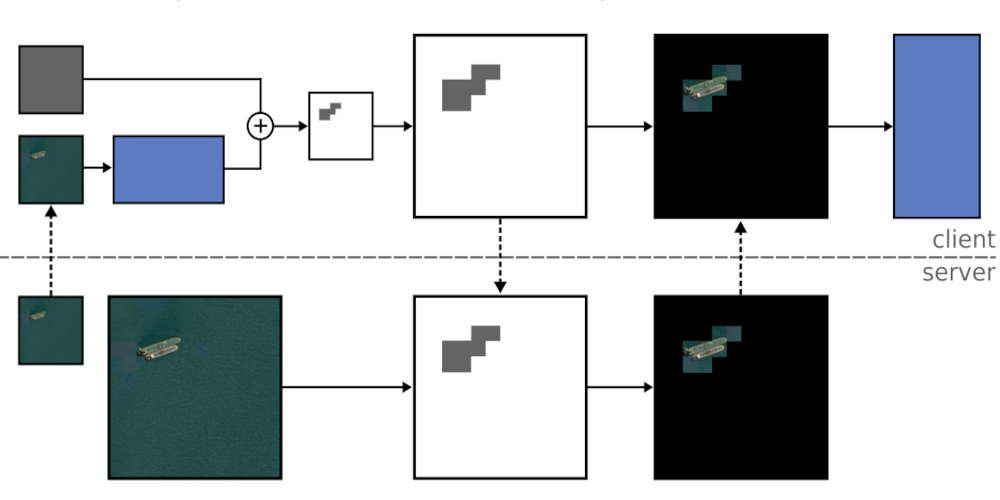
Accurate and up-to-date information on global forest health, disturbances, evolution of above ground biomass and carbon storage is essential for policy-makers to design effective strategies for climate adaptation and mitigation. Advances in Earth observation and AI have paved the way for automated forest monitoring using satellite data, along with radar and LiDAR data. However, existing forest maps often have low resolution, cover limited areas or fail to track temporal dynamics. The AI4Forest project brings together experts in AI, Applied Mathematics, Computer Science, Remote Sensing, and Climate Science, being a collaboration between the University of Münster, ZIB, TUM, LSCE, and CNRS. The project aims to develop scalable AI methods for forest monitoring and to efficiently and cost-effectively process large datasets. These advancements will enable the creation of detailed forest maps with high spatial and temporal resolution, down to individual trees and species, and allow for regular updates across Europe and globally.

A global canopy height map based on a deep learning model.
Project Members (Excluding External)

Jan Pauls
Doctoral Candidate

Jorunn Mense
Doctoral Candidate
Related Publications (Excluding External)
- Remote Sensing of Environment 2025
- ICML25 42nd International Conference on Machine Learning (ICML) 2025
- Remote Sensing of Environment 2025
- ICML24 41st International Conference on Machine Learning (ICML) 2024



